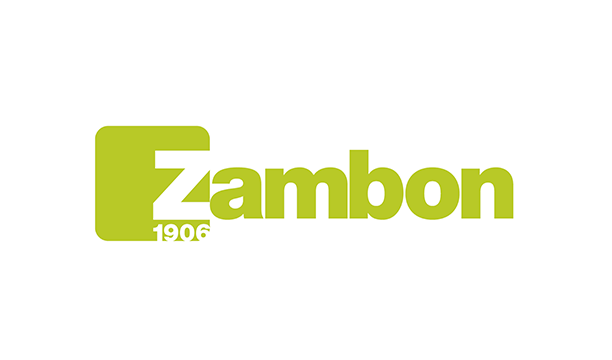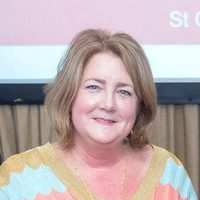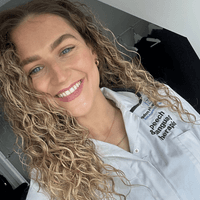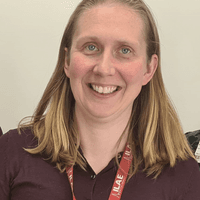Before you watch this webinar
Enhancing your learning experience begins with understanding you better. Collecting data enables us to tailor our educational content specifically for our audience. Discover more about how we handle your information in our Privacy Policy.
Event
Speech and communication difficulties in motor neurone disease (MND) – a multidisciplinary approach
Our sponsor

This webinar has received sponsorship from Zambon UK Ltd. The sponsor has had no input into the educational content or organisation of the session.
Aims:
To provide an overview of how MND affects speech and communication.
To introduce key strategies and multidisciplinary approaches for managing communication challenges.
To highlight the benefits of early intervention and assistive communication support.
Objectives:
Understand how MND impacts speech and communication.
Recognise the role of the MDT in supporting communication needs.
Learn about key interventions such as early communication planning, voice banking, and assistive communication options.
Presentation slides
Additional resources following the webinar:
- https://mybreathing.mymnd.org.uk/
- Video for feeding tube: Home - myTube
- UK MND Clinical Studies Group
MND Association - useful resources
Summary
Speech and swallowing problems are common in people with motor neurone disease (MND), and managing them requires a multidisciplinary team (MDT) approach.
During a recent MND Academy webinar, our team of experts explained how the conditionaffects speech and communication, the role of speech and language therapists (SLT) in the MDT, and the benefits of early intervention and assistive communication support.
A common problem
MND is a group of conditions where motor neurons that control motor function degenerate. “That affects everything that needs motor neuron and muscle function, which includes speech and swallowing,” said Dr Clare Galtrey, consultant neurologist at St George's University Hospitals NHS Foundation Trust
Around 30% of people have bulbar symptoms at presentation, and all will develop speech and communication problems as the disease progresses. Cognitive involvement can also impact on communication struggles.
Clare explained that the King’s MND staging system is based on arm, leg, and bulbar involvement. Stage one involves one region (e.g., arm, leg, or bulbar), whereas stage two, the most common stage at diagnosis, involves two regions, and stage three involves all three. At stage four, the patient will require supportive interventions, such as gastrostomy or non-invasive ventilation. Stage five is death. “Unfortunately, if stage one is bulbar onset, then the median survival is much less than if stage one is limb onset,” said Claire.
A multidisciplinary approach is essential, she went on, adding that neurologists play “a really small part”. All patients need input from respiratory, nutrition, gastroenterology,physiotherapy, occupational therapy, and SLTs, as well as eventual palliative care and end of life support. What really makes the difference, though, is co-ordination “and making the right things happen at the right time”, said Claire.
Jennifer Bedford said an MDT approach was so crucial because it ensured that “everyone has eyes on the patient”. “If someone sees something happening, they can refer across to colleagues,” she added.
Treatment
Riluzole is the only licenced treatment for MND, and has been shown to improve survival by around 10%. However, those with limb-onset disease tend to benefit more than those with bulbar-onset. Likewise, non-invasive ventilation, to support breathing, is less helpful in those with bulbar involvement.
Tracheostomy can be helpful, but only with “a lot of MDT support”, and nutrition “is crucial”., said Claire. Offering gastrostomy if patients have lost >10% of their body weight “can be helpful”. The myMND website, she added, is a useful tool for aiding discussions around interventions, she added.
Saliva management can be particularly distressing for patients, causing problems with, among other things, skin care and social anxiety. First line treatments include antimuscarinics, including glycopyrrolate in people with cognitive impairment. Botox is a second line option, followed by radiotherapy to the salivary glands.
There is a genetic component in around 10% of people with MND, even among those without a family history of the condition. While it does not cover the full range of risk factors, it is worth considering as an increasing number of antisense oligonucleotide designed to target specific mutations are in development, said Claire.
SLT in the MDT
Molly Crehan and Nikki Davies, SLTs at the Hillingdon Hospitals NHS Foundation Trust,outlined the timeline of SLT involvement in the MND patient journey.
It starts at referral, usually for swallowing difficulties or speech changes of “unknown origin” pre-diagnosis. During assessment, the SLT tends to take a case history, perform an oromotor examination and oral trials, and evaluate communication, including language and cognition, speech, and voice. “If we have concerns of motor neurone involvement, we will refer to a neurologist very early,” said Molly.
Post-diagnosis, the SLT team takes on a central role in the MDT, signposting the patient to information sources such as the MND Association. They also make the necessary onward referrals: to specialist services, such as assistive and alternative communication (AAC) and environmental control, nutrition and dietitian support, MND nurses, and palliative care.
Said Nikki: “Our role is about maximising quality of life, advocacy and really looking at that holistic picture. The MND best practice guidelines for health professionals say ‘ensure the patient is offered opportunity to discuss advanced care wishes’. That might mean facilitating that with AAC and pictorial support.”
Nikki explained her team would always discuss and initiate voice banking as early as possible, ideally before the patient’s voice changes. “This is important because it helps facilitate discussions around longer term feeding decisions, which is a really important part of the patient journey.”
Jenifer agreed, saying: “Banking is really important for this patient group, to make sure their wishes can be respected. Communication is important, so that people can be not only be informed, but they can take part in the decisions as well. That's really key to them being feeling they are getting good care.”
As the condition progresses, and people start to lose the control of their hands, the team helps to look at more advanced ACC options, such as eye gaze or head switches. “It can really help patients advocate for themselves in treatment decisions,” added Nikki.
Voice banking solutions include Acapella, which banks the voice exactly, and Speak Unique, which has a voice repair function for those who have already started to experience changes.There is also a predictive app, which learns the patient’s speech and language patterns, reducing fatigue during use. In addition, the team also develop communication booklets, as a backup in the case of ACC device failure, and offer Eye Transfer Boards (E-Tran), for example.
“We assist as indicated,” Nikki said, explaining the SLTs will work alongside all other teams to help facilitate patient communication.
Our sponsor

This webinar has received sponsorship from Zambon UK Ltd. The sponsor has had no input into the educational content or organisation of the session.
CPD accreditation
We will apply for CPD accreditation from the Royal College of Physicians for this webinar.
Please note CPD Federation approval does not include satellite symposia sessions.
Chair
 Ruth Stross
Ruth StrossDirector of services, MS Trust
Speakers
 Molly Crehan
Molly CrehanHighly specialist speech and language therapist for adult acute services, The Hillingdon Hospitals NHS Foundation Trust
 Nicola Davies
Nicola DaviesSpecialist speech and language therapist, The Hillingdon Hospitals NHS Foundation Trust
 Clare Galtrey
Clare GaltreyConsultant neurologist, St George's University Hospitals NHS Foundation Trust
 Jennifer Bedford
Jennifer BedfordHead of information and professional development, MND Association
MND Academy
Better understanding, optimised management, improved quality of life